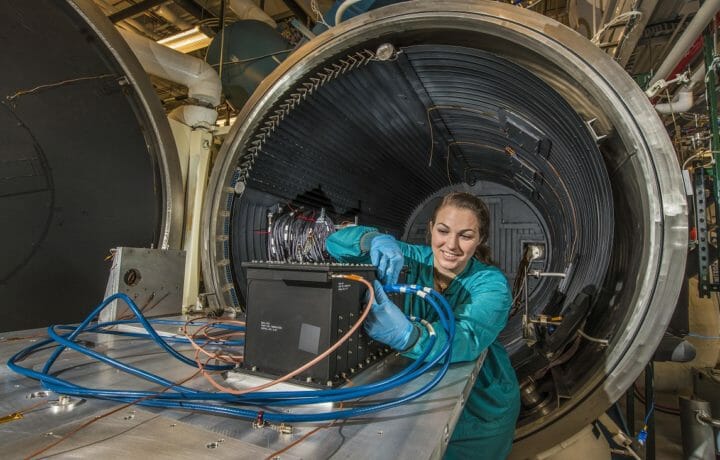Over the past several months Chinese ‘wanderers’ have successfully gained access to and photographed American military installations. One claimed to be a lost tourist, and was picked up wading in the rocks to get around fences at a Florida base. A car of allegedly lost Chinese failed to leave a base once denied entry; they didn’t turn around but continuing on into the compound until apprehended. Another woman was stopped having attempted to access the President’s Mar-a-Lago Resort. Why does this happen, and why with such frequency? Perhaps history provides clues.
Few know that the German Luftwaffe had a functioning helicopter at the end of World War II. A Flettner 282, complete with swastika, can be seen in a photograph confiscated by the U.S. Army at the end of the war. This strange aircraft was tested by Army Materiel Command. At the dawn of the helicopter age, the Flettner had a unique means to overcome torque problems: it intermeshed two contra-rotating blades. At that same time, an American test vehicle used a tail rotor on the main boom to overcome the same problem. All of this was available for an investment of 25 cents in a 1947 issue of Popular Mechanics.
In those days, when America was at the top of a war devastated world, few thought of protecting our information. We were well-prepared for physical security. We had long lines of workers who had to display work badges to get on locations like Aberdeen Proving Grounds. But once on, a reporter could wander more or less at will, interviewing whomever he wanted. Let’s consider this magazine, and try to see our current information management in comparison. A wanderer would know, having carefully read the issue of Popular Mechanics, that the current trend in military technology was rocketry. In fact, a graphic of how to measure a long range missile by radio is provided. Complete with range and altitude! You learn how a Doppler station works. Helpfully, the value of three such stations is emphasized. Indeed, even your measurements for frequency, velocity and acceleration of a rocket like the V-2 are explained! Of course, we also learn that a one of a kind supersonic wind tunnel can save you millions in research if you use it in conjunction with a Schlieren camera. And all of this can be explained in greater depth if you but write to the government, which will provide you contacts in the various industries currently making the materials that the information explained. Armed with this information, a spy entering a military or cleared contractor facility already has a ‘shopping list’ for more research.
Academia and Espionage
Could this possibly have really happened? Yes, it did. And yes, it does. Look at current technological publications of any scientific or military discipline. In a world of publish or perish, many engineers try to get their ideas out there in the world of academia or technology development. Here, however, is a paradox. Engineers rarely stay confined to a single project or area of expertise, but are constantly pushing the envelope to produce more – and sometimes with international partners or companies. Why? One quotation from an anonymous officer from post-war Aberdeen describes it well.
“The nation learned a lesson during World War II, that any inventor knows. The development of new and better tools, whether for war or peace, is a continuing process. You can’t go to sleep on the job, and then when faced with an emergency produce overnight a better rocket or recoilless rifle than the other fellow. Much that is going on here today will be obsolete in a short time, but that is the only way we can keep abreast of modern military improvements vital to our welfare.”
It is always a balance. How do we make progress, but keep secrets? These ideas seem to be perpetually in conflict. We need to share, but share wisely. We need to remember ‘need to know‘ when we put something in publication for the world to see. We need to remember why some of these people tried to get on post. Yes, maybe we picked them up for illegal access, or maybe for taking photographs. But did we check for what they might have left behind? Did we completely check their entire route to verify who was there, what was happening at the time, what might have been deposited somewhere? Their access created risk – to an extent we may not yet realize. America remains at the center of innovation – but we can never forget the extent other nations will go to in an effort to procure information. Often open source intelligence and academic research provides the shopping list – once they have the facility access, the damage may be irreparable.




